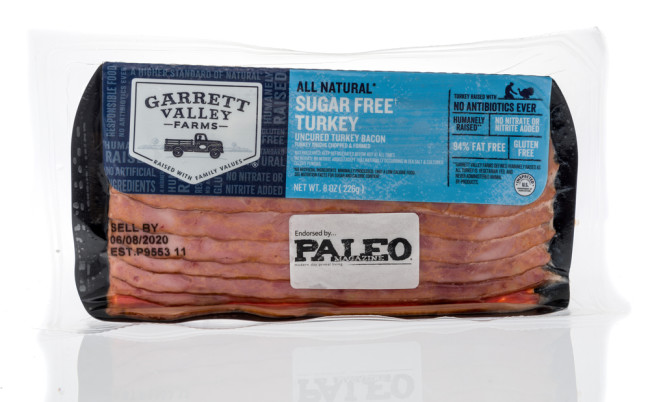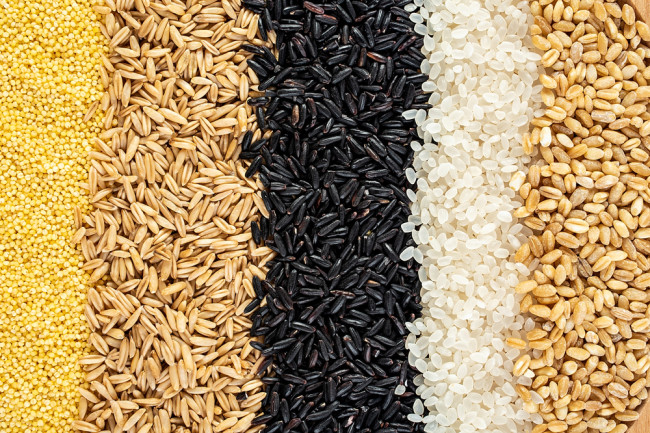Can you prevent weight gain and 21st-century health problems by eating the way our ancestors did?
That’s the premise behind the paleo diet, which takes inspiration from the Paleolithic era that spanned between 2.6 million to 12,000 years ago — predating the advent of farming and animal domestication.
Some followers of the paleo diet believe that humans are genetically adapted to eat a certain way — one that’s closer to how early humans ate. This view is rooted in the evolutionary discordance hypothesis, which states that human evolution stopped around 50,000 years ago. In other words, our Stone Age bodies are not suited for our modern diets of convenience and carbs, and this mismatch is making us fat and sick.
While eating like a caveman or cavewoman isn’t easy, making the paleo leap is purported to result in a number of health benefits — from weight loss, to clearer skin, to improved mood, to better sleep. But like many health and wellness fads, researchers say paleo’s health benefits are likely too good to be true.
Unfortunately, scientists haven’t found much evidence that backs up the health benefits of the paleo diet beyond weight loss. Other claims haven’t been studied at all. But what research has uncovered is that it might be unhealthy for some people to follow a paleo diet, particularly among those concerned with heart and kidney health.
But there’s another mammoth in the room: Even paleolithic people didn’t eat “paleo.” Plenty of anthropological research has found that the popular diet’s interpretations of how Paleolithic-era humans ate are pretty inaccurate.
“[With] ancient diets, people just ate the foods available to them. With the current globalized food system, we now have access to more types of food, which makes that approach more complicated,” says Colleen Rauchut Tewksbury, a senior research investigator and bariatric program manager at the University of Pennsylvania. She is also a spokeswoman for the Academy of Nutrition and Dietetics.

(Credit: Alexander Raths/Shutterstock.com)
The Modern Paleo Diet
According to Google Trends data, “paleo” was the most-searched diet in 2013. In recent years, diets like keto, intermittent fasting and the carnivore diet have kicked paleo out of the top rankings. But survey data from 2018 showed that roughly 3 million Americans were still following a version of the paleo diet.
It is also sometimes called the Paleolithic diet, Stone Age diet, hunter-gatherer diet or a caveman diet. Whole30, which is a 30-day regimen based on the paleo diet, has also become a popular way to supposedly “reset the body” after an indulgent holiday season.
But no matter what you call it, interest in adopting ancient diets isn’t new. In the 1970s, an American gastroenterologist named Walter L. Voegtlin promoted a meat-centric “Stone Age” diet to achieve optimal health. Voegtlin is largely regarded as the pioneer of the modern paleo diet and was the first to write a book about it. But his ideas never gained widespread support, which perhaps is not a surprise considering some of Voegtlin’s extreme and unsavory views — like encouraging the mass slaughter of dolphins and eugenics.
Since then, other purported health gurus helped to bring paleo out of the cave and into the mainstream. Primal eating feels at home in our current era of romanticizing health wisdom and habits of the past.
But before you keep sipping on bone broth, it might be a good idea to consider what real prehistoric people actually ate.
What Did Our Paleolithic Ancestors Eat?
While people living in Paleolithic times would have painstakingly hunted and gathered their own food, modern-day followers of the diet can conveniently hop in their cars and zoom to the nearest grocery to find most paleo essentials on their shopping list. There, they can load up on all the meat, fish, eggs, fruits, non-starchy veggies and nuts they want. But dairy, legumes, grains, added sugars, alcohol, coffee and processed food should be avoided. Some versions of the paleo diet are stricter than others.
But a nuance the modern take on the diet doesn’t take into account is that hunter-gatherers varied considerably in terms of the food they consumed. Different groups of early humans lived in vastly different climates and landscapes. People simply ate whatever was available to them, wherever that was.
“Homo sapiens occupied every niche on the planet starting from [around] 100,000 years ago. We were highly adaptable,” says Jennie Brand-Miller, a professor of nutrition at the University of Sydney. “There were high-latitude hunter-gatherers who ate mostly animal foods and very little plant food … and there was the opposite, [those who ate] a lot of plant-based food and only a little animal [protein].”
“Interestingly, there were no vegan hunter-gatherers,” she says.
Meat-eating is often emphasized in anthropology simply because butchered animal bones are often better preserved and more likely to be discovered than evidence of plant-based meals. Based on what’s been uncovered, early humans didn’t appear to be terribly picky eaters. They probably ate insects. They didn’t turn their nose up at elephant brains. They ate starchy tubers. They ate oats, processed by hand.
One thing’s certain, though: Our ancestors most certainly did not eat bacon or chocolate. Those indulgences came on the food scene much later in history, yet are sometimes recommended in paleo diet literature. (But it’s pretty safe to say our paleo ancestors would have eaten bacon or chocolate, if given the chance.)

(Credit: Keith Homan/Shutterstock)
What Are Humans Adapted to Eat?
The idea that we should adopt a special diet because our genes are still stuck in the Stone Age isn’t quite accurate. As cultures change through time, our genes change, too. Brand-Miller says there are a few genetic adaptations to modern diets that help illustrate this.
One of the best examples relates to milk and the prevalence of lactose intolerance. For most of our species’ history, the ability to digest milk after infancy didn’t exist. Adults lacked lactase, the enzyme needed to break down lactose to simpler sugars that can be absorbed by the intestines. When people started domesticating cattle around 10,000 years ago, they started relying on dairy products as a food source. Over time, these groups evolved a genetic mutation for making lactase into adulthood. But because dairy wasn’t a traditional part of diets everywhere, many descendants of these groups are missing this genetic mutation today.
People vary in their ability to process other foods as well, Brand-Miller says. People with genetic ties to regions that historically ate a high-starch diet tend to have more copies of the gene linked to higher production of salivary amylase — an enzyme that breaks down carbs. That makes east Asians in particular more efficient at digesting starchy food. Likewise, Brand-Miller says fruit wasn’t part of the traditional Arctic diet. So, it’s not surprising that a greater incidence of people with Inuit ancestry are deficient in sucrase, the enzyme that processes sucrose, a type of sugar.
But some people who don’t have adequate levels of particular digestive enzymes can still consume small amounts of these foods without ill effects, Brand-Miller says. Aside from these differences, humans are generally well-adapted to eat almost anything put in front of them, which is perhaps one of the secrets to our species’ success.
“People always have and probably always will eat a wide variety of foods depending on culture and what’s available,” says Melyssa Roy, a public health researcher at the University of Otago in New Zealand.
Is the Paleo Diet Healthy?
The health claims around the paleo diet are as controversial as the ancient menus themselves. Typically, the modern paleo diet is high in protein and low in carbohydrates. Paleo often gets a bad rap for being so restrictive, and it doesn’t allow consumption of foods like legumes, whole grains and dairy products.
“Nutrition has a lot of gray area, and many diets such as these leave little room for flexibility or individualization,” says Rauchut Tewksbury.
Because paleo hasn’t been studied extensively, the long-term benefits and potential risks are poorly understood. But if weight loss is your primary reason for considering the paleo diet, there’s some evidence it works.
For instance, Roy and her colleagues compared the weight loss results of 250 overweight individuals following one of three diets: intermittent fasting, Mediterranean and paleo. After 12 months, all groups lost weight — but paleo came in last. Paleo dieters lost 4 pounds on average, compared with a 6-pound loss on the Mediterranean diet, and nearly 9 pounds with intermittent fasting. In general, participants found it easiest to stick to the Mediterranean diet, which is an important part of sustaining weight loss over time.
But if quick weight loss is your goal — the paleo diet has its merits.
“In the short term, lower carbohydrate paleo diets are associated with higher satiety and faster weight loss,” Brand-Miller says.
A two-year randomized and controlled study followed 70 postmenopausal Swedish women who were obese. Some participants were assigned to a paleo diet that included lean meat, fish, eggs, vegetables, fruits, berries and nuts. Other participants were assigned to a diet in line with the Nordic Nutrition Recommendations (NNR), the joint dietary recommendations for northern European countries. The NNR incorporates less protein and fat, but more carbohydrates than the paleo diet.
Six months in, the paleo group lost more weight than those following the NNR. Paleo dieters lost 13 pounds on average compared with 5 pounds with NNR. But after 24 months, the difference in weight loss between the two diets was less pronounced. Both groups showed similar improvements in blood pressure and cholesterol. Interestingly, participants’ triglyceride levels decreased more on the paleo diet. High levels of triglycerides — a type of fat found in the blood — have been linked to heart disease.
But that doesn’t necessarily mean that the paleo diet is heart-healthy. Brand-Miller says several studies have linked low-carb diets to higher rates of death, especially from heart disease. To add to that, she says mouse studies have suggested high-carbohydrate diets increase longevity. Perhaps the reason is rooted in our microbiomes.
A study compared the bloodwork of 44 paleo dieters with 47 people following a diet based on Australian national health recommendations. Among paleo dieters, researchers found elevated levels of a compound called trimethylamine N-oxide, which is associated with heart problems. In their work, the researchers explained that high levels of this compound might be due to a lack of whole grains in the paleo diet. Bacteria in the gut produces trimethylamine N-oxide while digesting meat. But consuming whole grains increases production of beneficial gut bacteria, which seems to counter the harmful compound.

(Credit: WR.lili/Shutterstock)
Saturated fat might be another thing to worry about on the paleo diet. Dietary fats, in general, aren’t demonized today like they were in the ’90s. But saturated fat isn’t totally in the clear. Decades of research have linked the consumption of saturated fats to elevated levels of LDL cholesterol levels (the bad kind), which has been shown to increase the risk for heart disease.
“The evidence is conflicting about whether high amounts of saturated fat are harmful in the context of this kind of diet. For some people, it may be better to avoid high amounts of animal fats, especially if they’re still consuming a more standard diet. A strict paleo diet eliminates dairy, and there may be concerns around calcium intake, too,” Roy says.
Diets that are high in protein have also been linked to kidney problems. Whether this applies to people with normally functioning kidneys hasn’t been settled. Filtering excess protein from the blood can put additional stress on the organs, further decreasing their function among people with kidney problems.
But the idea that paleo must incorporate copious amounts of meat might be a bit of a misnomer to begin with.
“[Paleo] is more about eating foods in their natural state,” Roy says.
Brand-Miller says there are healthier approaches to paleo. For instance, incorporating plenty of fruits and vegetables — even those that are packed with carbs. Plant-based foods can add nutrients, fiber, flavor and variety to diets. And, they’ll help you live longer, too.
If the paleo diet gets anything right, it’s the stance against processed food. Highly refined ultraprocessed foods now account for more than half of all calories consumed and 90 percent of added sugar intake in the U.S. — which increases the risk of weight gain and several health conditions. But it’s not a matter or paleo or bust.
“Ultimately, the best way to eat for your health is the change you can keep up with. Most people know what they need to do: Limit calories, eat fruits, vegetables, whole grains and lean proteins. The challenge is how to do it,” says Rauchut Tewksbury. “There are lots of ways people can achieve this. The key is figuring out which is best for you as an individual that you can keep up with.”


